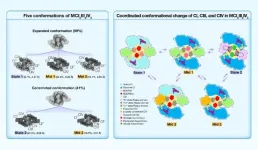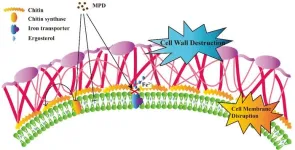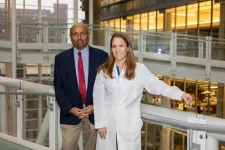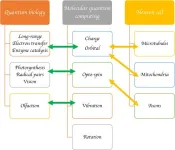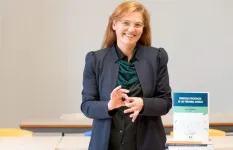Acute lymphoblastic leukemia (ALL), the most common childhood cancer, disproportionately affects children of Hispanic/Latino origin in the United States. They are 30-40% more likely to get ALL than non-Hispanic white children, but the exact genetic basis and cause of that increased risk are unknown.
Now, a study from the Keck School of Medicine of USC has revealed a key genetic variant contributing towards the increased risk, as well as details about the biological basis of ALL. The team used genetic fine-mapping analysis, a statistical method that allows researchers to disentangle the separate effects of genetic variants in a region of the genome. They identified a variant found at a relatively high frequency in people of Hispanic/Latino origin that increases ALL risk by around 1.4 times. The study, funded in part by the National Institutes of Health, was just published in the journal Cell Genomics.
“Combined with the fact that around 30% of Hispanic/Latino people in the United States carry this gene variant, but it’s basically absent in people of predominantly European ancestry, we think it's an important contributor to the increased ALL risk among this group,” said the study’s lead author, Adam de Smith, PhD, an assistant professor of population and public health sciences and a member of the USC Norris Comprehensive Cancer Center at the Keck School of Medicine, as well as a scholar of the Leukemia & Lymphoma Society.
The researchers also performed tests to better understand how the variant, located on the IKZF1 gene, which underlies B-cell development, relates to ALL through its influence on the development of B-cells, a type of white blood cell known to be disrupted by the disease.
“Together, the analyses in our study provide the statistical, biological and evolutionary insights behind this increased risk, and may ultimately aid scientists working to develop screening tools and therapies for ALL,” said Charleston Chiang, PhD, an associate professor of population and public health sciences and associate director of the Center of Genetic Epidemiology at the Keck School of Medicine and the study’s co-senior author.
The genetic basis of leukemia risk
To pinpoint the genetic basis of the elevated ALL risk Hispanic/Latino children face, the researchers analyzed genetic data from the California Cancer Records Linkage Project. Their dataset included 1,878 Hispanic/Latino children in California with ALL and 8,411 without the condition; 1,162 non-Hispanic white children with ALL and 57,341 without; and 318 East Asian children with ALL and 5,017 without.
The research team focused on the IKZF1 gene, known to relate to ALL but never before linked with ethnic risk disparities. Using genetic fine-mapping analysis, they independently analyzed each position along the gene—known as a single nucleotide polymorphism (SNP)—to determine whether having a certain variant increased ALL risk.
They found three independent SNPs linked to higher ALL incidence, one of which was present in about 30% of people of Hispanic/Latino origin in the U.S. and less than 1% of people of primarily European origin. Although overall risk for the disease is low across all racial/ethnic groups, children with that gene variant, located at SNP rs76880433, were 1.44 times as likely to develop ALL as children without the variant.
The genetic ancestry of most Hispanics/Latinos can be traced to Europe, Africa, and Indigenous America. Further investigation revealed that the risk variant was specifically linked with Indigenous American ancestry and may have become more common in this group because it conferred a selective advantage at some point in human history.
Next, the Keck School of Medicine team partnered with co-senior author Vijay Sankaran, MD, PhD, an associate professor of pediatrics at Harvard Medical School and attending physician at the Dana-Farber/Boston Children's Cancer and Blood Disorders Center, to conduct a series of experiments to better understand how the genetic variant at IKZF1 increases risk for ALL.
One experiment analyzed chromatin accessibility, a test which indicates how fully a given gene can be expressed. The researchers found that the risk variant reduced chromatin accessibility, preventing IKZF1 proteins from being fully expressed.
Sankaran and his team also conducted experiments with stem cells, finding that “knocking out” the IKZF1 gene caused B-cell development to stall in its early stages.
“Looking at all of this together, we think that the risk variant is reducing IKZF1 expression,” de Smith said. “By doing so, it’s keeping B-cells in a more immature state, which would increase ALL risk by giving the cells more chance to develop mutations that could eventually lead to overt leukemia.”
Leukemia screening and treatment
The new insights about IKZF1 bring researchers one step closer to developing effective screening tools to predict who may develop ALL, but more research is needed. In addition, the findings provide important clues about potential ways to treat the disease, for instance by progressing B-cell development after it stalls.
“We also need to understand whether this variant is associated with different patient outcomes, such as the risk of relapse or chances of survival, and why that might be,” de Smith said.
He and his colleagues also hope to explore whether the newly identified risk variant helps explain the even higher risk of ALL among Hispanic/Latino adolescents and young adults, who are more than twice as likely to get the disease than people who are non-Hispanic white.
About this research
In addition to de Smith, Chiang and Sankaran, the study’s other authors are Soyoung Jeon, Jalen Langie, Tsz-Fung Chan, Steven Gazal, Nicholas Mancuso and Joseph Wiemels from the Center for Genetic Epidemiology and the USC Norris Comprehensive Cancer Center, Keck School of Medicine of USC; Lara Wahlster, Susan Black, Liam Cato, Soumyaa Mazumder and Fulong Yu from Boston Children’s Hospital and Department of Pediatric Oncology, Dana-Farber Cancer Institute; Linda Kachuri from the Stanford University School of Medicine; Nathan Nakatsuka from the New York Genome Center; Guangze Xia from the Guangzhou National Laboratory, Guangzhoi, China; Wenjian Yang and Jun Yang from St. Jude Children’s Research Hospital, Memphis; Celeste Eng, Donglei Hu, Esteban Gonzalez Burchard and Elad Ziv from the Helen Diller Family Comprehensive Cancer Center, University of California, San Francisco; Catherine Metayer from the School of Public Health, University of California, Berkeley; and Xiaomei Ma from the Yale School of Public Health.
This work was supported by the National Institutes of Health [R01CA262263, R01CA155461, R00CA246076, R35GM142783, R01DK103794, R01CA265726]; the New York Stem Cell Foundation; and the Dana-Farber Cancer Institute Presidential Priorities Initiative.
END
